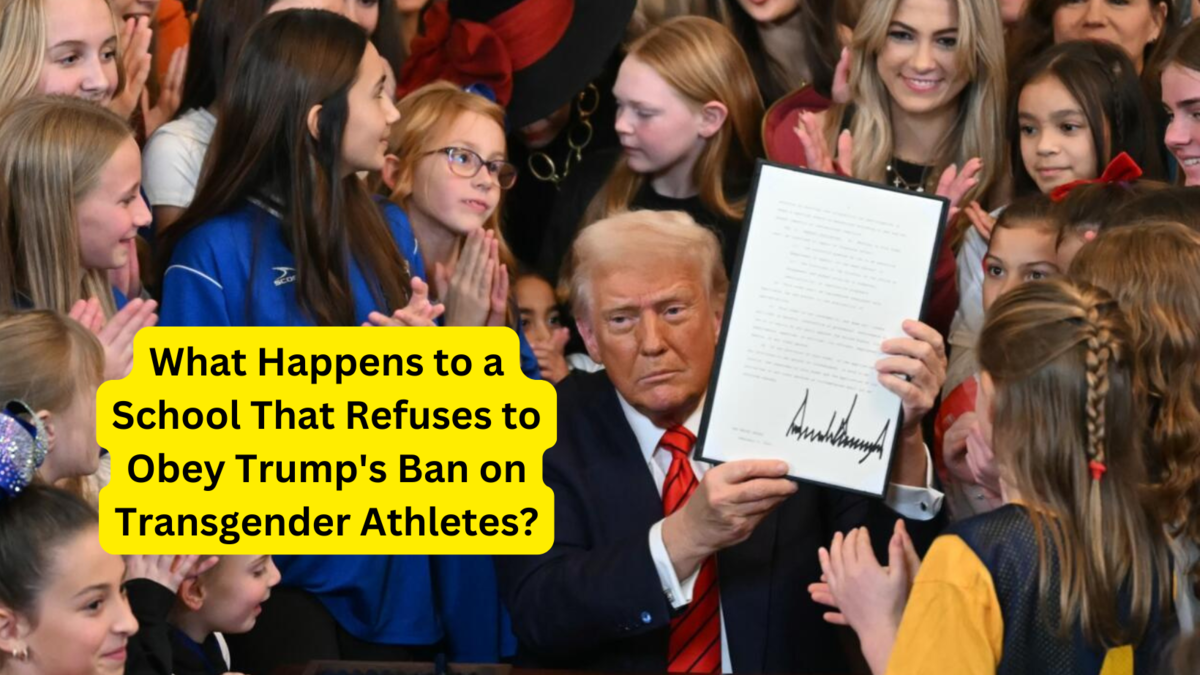Trump’s Ban on Transgender Athletes: Former President Donald Trump’s recent executive order barring transgender athletes from competing on women’s sports teams has left schools in a difficult position. The order threatens to strip federal funding from schools that do not comply, raising big questions about enforcement and the real-world consequences of noncompliance.
This move is part of a broader effort to reshape the interpretation of Title IX, a federal law that prohibits sex-based discrimination in federally funded educational programs. The Trump administration has directed agencies to interpret Title IX in a way that aligns with the order, effectively forcing schools to exclude transgender athletes from women’s sports or risk losing financial support.
What’s at Stake for Schools?
In simple terms: federal funding. Trump made it clear that schools failing to follow the directive could be investigated for violations of Title IX, with the potential for financial penalties.
“The war on women’s sports is over,” Trump declared on February 5 during the signing of the executive order at the White House. “If you let men take over women’s sports teams or invade your locker rooms, you will be investigated for violations of Title IX and risk your federal funding.”
While Trump frames this as a fight to “protect” women’s sports, legal experts say the order is broad, vague, and difficult to enforce. The directive goes beyond just sports teams—it also applies to locker rooms, physical education classes, and other gender-segregated spaces.
How Many States Already Have Similar Bans?
Even before Trump’s executive order, more than 25 states had enacted laws banning transgender athletes from competing based on their gender identity. According to the Movement Advancement Project, a think tank that tracks LGBTQ+ policy, at least 50% of U.S. states have passed such restrictions.
However, not all states have followed suit. Many, including those led by both Democratic and Republican governors, have declined to implement such bans, leaving a patchwork of different policies across the country.
The Legal Uncertainty: Can Schools Fight Back?
Experts say there’s a high chance that this order will face legal challenges from states, schools, and civil rights groups. Organizations like the Human Rights Campaign (HRC) argue that transgender participation in sports has been widely misunderstood, with no credible evidence that trans athletes have an unfair advantage in most cases.
The National Women’s Law Center has called the order “blatantly discriminatory” and warned that it raises more questions than answers. Legal experts say there are major enforcement challenges, especially since the executive order calls for state attorneys general to determine how to apply it.
“It’s extremely broad,” says Shiwali Patel, a Title IX expert. “It touches educational institutions, international competitions, and even the immigration status of trans athletes.”
What Does Title IX Actually Say?
Title IX is not a blanket ban on transgender athletes—far from it. The law was originally passed in 1972 to ensure equal opportunities for women and girls in education. It allows the federal government to withhold grants and funding from institutions that violate gender equity rules.
Trump’s executive order attempts to redefine Title IX so that sex is recognized only based on reproductive biology at birth. However, experts argue that this interpretation is far from settled law. Ultimately, the final decision may rest with Congress, the courts, or both.
In January, the House of Representatives passed a bill that would restrict trans students from competing on women’s teams, but it faces an uphill battle in the Senate, where it would need at least 60 votes to bypass a filibuster.
New Investigations Into Schools
Enforcement is already beginning. Shortly after Trump signed the order, the Department of Education launched investigations into three institutions over alleged Title IX violations:
- San Jose State University (California)
- University of Pennsylvania (Philadelphia)
- Massachusetts Interscholastic Athletic Association
Additionally, the NCAA (National Collegiate Athletic Association) announced an update to its policies, stating that only student-athletes assigned female at birth would be eligible for women’s sports competitions.
The Bigger Picture: A Long Legal Battle Ahead
This executive order, like previous policies on transgender rights, will almost certainly face legal challenges. Courts have ruled both for and against transgender participation in sports, meaning this issue is far from settled.
In the meantime, schools that defy the ban could find themselves in a legal and financial limbo—caught between federal directives, state laws, and their own policies on inclusion and fairness.
For now, the battle over transgender athletes in sports is not just about competition—it’s about civil rights, federal funding, and the future of Title IX in America.
